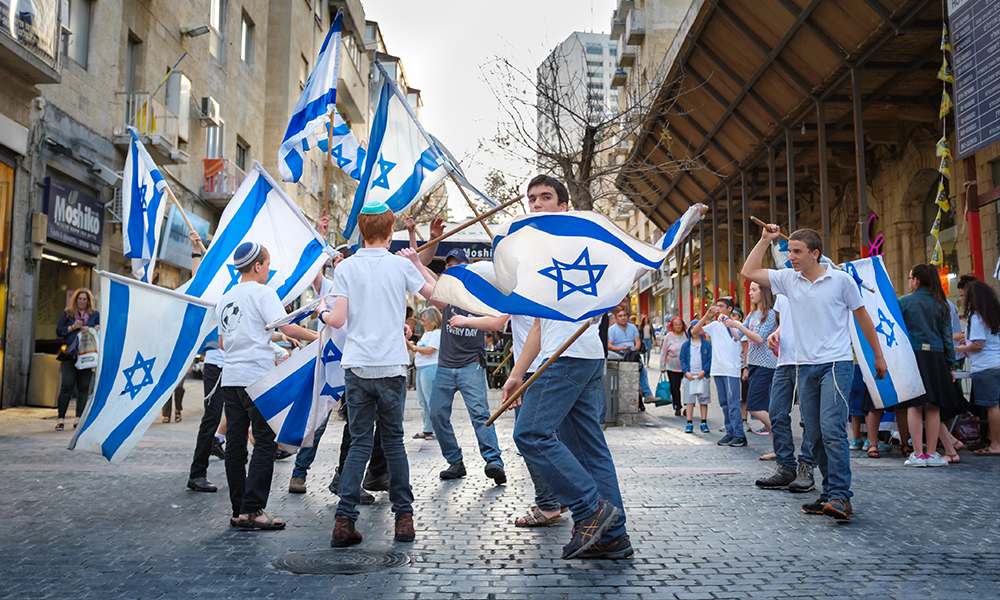This article was originally published in the October 2006 issue of Moment.
My mother-in-law, Jeanne Singer, died in Jerusalem this summer, just four days after her 98th birthday. I’ve been going through everything she left behind, especially the drawings and paintings of her later years. Among the canvases, I was startled to find a hand-drawn map—about five feet long—stapled on two pieces of plywood hinged with a rough strip of fabric. The map, bearing landmarks in southern Lebanon, was our son Alex’s improvised briefing tool for instructing his soldiers while he served in the Israel Defense Forces in 1987. It was two years after a small IDF force, along with its Christian allies, the South Lebanese Army, had established control over a 12-mile swath of Lebanon north of Israel’s border. This occurred in the aftermath of the war Israel waged in Lebanon to remove the PLO terror base and to chase Arafat to Tunis. From 1985 until 2000 it was the responsibility of Israeli soldiers on both sides of the border to prevent terrorist incursions into Israel’s villages and to stop Hezbollah’s firing of Katyushas into Israel. During those 15 years, the human cost to Israel was seven civilians killed by Katyushas and two or three soldiers killed each month.
One of those soldiers was Alex. On September 15, 1987, he was killed in an ambush on the boulder-strewn Christofani ridge by Palestinian terrorists, trained in Syria. The terrorists never reached their target—Jewish villages inside Israel.
The quiet in Israel’s north was imperfect. Over the years some Israelis wearied of the cost in soldiers’ lives. In 1997, after 70 soldiers died in a helicopter collision on their way in to Lebanon, a grassroots organization, that became known as the Four Mothers Movement, demanded that the Israeli government withdraw from the security zone. They succeeded when Ehud Barak took office in 2000 promising to “ensure the safety of the northern towns and villages,” by withdrawing and redeploying inside Israel’s northern border. Sheik Hassan Nasrallah, Hezbollah’s leader, had already proclaimed on CNN, “We’re close to victory; we’ll drive [the IDF] from our land.” In May, Barak fulfilled his pledge in a sudden nighttime pullout.
For the next six years, northern Galilee enjoyed greater normality, a burgeoning of restaurants and family-run inns that became favorite destinations. Hezbollah used this time, under the nose of the IDF now deployed inside Israel’s border, to build a honeycomb of deep bunkers among southern Lebanese villages, to bring in more than 13,000 short and long range rockets supplied by Iran through Syria, to train youth in Iranian terror camps, and to continue indoctrination against Israel the aggressor, Israel the nation that must be excised from its home.
This summer we learned the price of our contentment. For 34 days, 4,000 rockets flew from Nasrallah’s arsenal into Israel, as far south as Hadera, 30 miles north of Tel Aviv. This was a war that missed our family. Our sons were not called to their reserve units; our grandsons were still too young. But if the next war comes in four years, we will have our own on the line.
For all its imperfections, the decade and a half occupation of southern Lebanon prevented Hezbollah’s massive arming and becoming a terror state within a weak nation. A month after the IDF left Lebanon in 2001 wrote in Moment. “For Israel to appear defeated by Hezbollah and for Syria to be courted as a peace partner may be messages of weakness that will encourage Arabs to dream again and plan for Israel’s defeat and expulsion.” In the same column I quoted Amos Oz, whose justification for withdrawal was that “Lebanon will have to decide between war and peace. And if it chooses war it will be a textbook war between Lebanon and Israel, army against army, without quarter.”
We know now that the texts have yet to be written for the war Israel fought this summer. It was not Oz’s nation against nation. It was terrorists embedded within villages sending rockets to kill whoever happened to be at the other end, against an army often protecting innocent life at the expense of its own soldiers. It was a war Israel entered confident in its aerial power and advanced weaponry, weak in training and equipping its ground forces, inadequately supported by intelligence. It was a war in which civilian resilience and support for the IDF never faltered and, equally, a war where reservists called from home were ready to pay the price of destroying Hezbollah.
The lessons known by Alex and his commanders must be relearned today: Israel must be prepared for ground offensives to secure its borders; antiseptic war is a delusion; patient persistence must be as much an emblem of Israeli armed forces as it is for those who plan the destruction of the Jewish state. Courage of the young must be matched by the skill and determination of leadership. And the citizens of Israel must once again understand that we are a nation that will survive only if we understand our purpose and accept that we are still “a people that dwells apart, not reckoned among the nations” (Numbers 23:9). Only then may we one day cease finding war maps that can be used again and again.
Top photo: Children playing with Israeli flags. Credit Kristoffer Trolle on Flickr.

